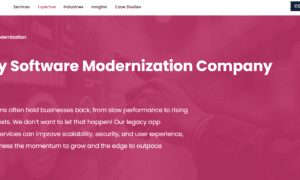Selling cybersecurity solutions to executives is far from an easy task. For much of the C-suite, cybersecurity may be seen as one big cost center – a money pit that delivers nothing to the bottom line.
But that is simply not the case. Done right, cybersecurity fuels business growth rather than hinders it. The challenge is convincing the C-suite to see security as the strategic investment it truly represents.
Shifting executive mindsets requires communicating cybersecurity’s value in the business terms to which they relate. Instead of leading with cyber hygiene and compliance, talk about increased revenue, reduced risk, and empowered innovation. It simply requires reframing security into the language of business.
The insights in this blog will help to equip you to earn executive backing and unlock the budgets you need to protect the business and drive it forward simultaneously.
Identify the True Decision Makers
Before influencing the C-suite, you must understand the power structure and politics. Every organization has its own unique ecosystem of influential leaders. Avoid wasting time with figureheads and identify the ones with real authority around cybersecurity direction and spending.
Talk to managers in sales, finance, operations, and other business units to determine who the hidden decision-makers are when it comes to security. Sometimes, CISOs and CIOs have surprisingly little power in this area. You need to pitch to the executives who control the budgets, and that all depends on the exact solutions you are selling – and the problems you’re solving.
Understand Executive Motivations Around Cybersecurity
Next, recognize what motivates leadership when it comes to cybersecurity oversight. Is their primary concern compliance, risk management, costs, or enabling business development? They may operate in healthcare and must comply with HIPAA, meaning data security is one of their main pain points and priorities.
This insight lets you frame cybersecurity in a financial and business context instead of leading with tech features or risk scenarios. Align programs to executive incentives, and you have a much greater chance of winning their support.
Suppose you can conduct informal interviews with executives to learn their cyber risk and security spending philosophy. Ask questions like:
- How do you view the role of cybersecurity in this company – as an expense, a requirement, or a strategic asset?
- What criteria do you use to judge whether a security program adds value?
- Which cyber risks keep you up at night as a leader of this business?
Listen closely for clues around cost sensitivity, compliance fatigue, IPO plans, or new revenue goals. Then, security priorities and projects will be mapped to the executive agenda revealed by this intel gathering.
For example, if the CFO constantly frets about legal exposure or SEC scrutiny, create a GRC dashboard highlighting compliance gaps, D&O insurance limits, and regulation benchmarks. Make it easy for leadership to see how cyber risk maps to business risk.
The better you understand the executive mindset, motivations, and risk tolerance, the better you can tailor security messaging to win allies rather than build skepticism.
Use SEO to Strengthen Security Messaging
Even the C-suite relies heavily on Google to research the latest business issues and trends. This presents a prime opportunity to position your brand as an industry thought leader and authority in cybersecurity. But what exactly does effective SEO look like for security?
SEO for cybersecurity aims to ensure that executive teams and key decision makers encounter insightful, credible content from your cybersecurity experts whenever they search related topics. You want to dominate the first page of Google results for queries that are relevant to the problems you solve.
This allows you to educate and influence the C-suite’s perspectives on risk, compliance, data protection, and more on their own proactive searches. They see your organization as the trusted source for security strategy guidance without you having to pitch them directly.
Tactics include actively blogging on emerging cyber topics, optimizing executive and thought leader bios for search rankings, contributing to industry publications as guest authors or through cyber PR, and building links to your security philosophy content from credible external sites.
The more your cybersecurity content permeates the web and ranks highly in Google, the more it cements your brand as an authority executives turn to for answers. SEO exponentially strengthens security messaging and positioning company-wide.
Quantify Cyber Risk in Business Terms
One of security leaders’ most significant mistakes is describing cyber risk only in technological jargon that means little to the C-suite. Executives deal with financial metrics — revenue, profit, shareholder value, and growth.
When pitching security initiatives, you must quantify cyber risk in dollars and cents. Be specific and cite recent examples, ideally from competitors or industry partners. Real-world statistics make the danger tangible for leadership teams.
In addition to potential loss figures, model cyber risk in terms of opportunity cost. Data breaches, legal fines, infrastructure repair, and cyber PR crisis management all drain resources that could fuel product innovation or expand customer support teams. Framing risk conversations this way helps executives weigh tradeoffs and make fully informed business decisions.
At the end of the day, the language gap between security and executive teams is often the core issue. Business leaders simply don’t grasp cyber risk, while security professionals struggle to convey technology concepts in financial terms.
Model Cybersecurity as a Business Enabler
Another key strategy is positioning cybersecurity as an enabler of business development rather than just a defensive necessity. Security fuels growth by protecting customer data, safeguarding IP, and maintaining compliance standards.
Describe how your program directly ties to corporate objectives around new products, expanded markets, and revenue goals. Support business leaders in safely adopting cloud, mobility, and IoT technologies. When cybersecurity is aligned with corporate strategy, funding tends to flow more freely.
Report Security Metrics That Matter to The Leadership Team
As the saying goes, “What gets measured gets managed.” This is why reporting relevant cybersecurity metrics to executives is so essential. But avoid overwhelming them with techy reports they don’t connect with.
Analyze which metrics leadership cares about, even indirectly. For example, track security incidents that trigger downtime, compliance violations that generate fines, breached accounts of VIP customers, or IP theft related to key products. Make the linkage explicit. Educate executives on benchmarking security program maturity as well.
Final Word
Selling cybersecurity to the C-suite is an ongoing challenge in most organizations. However, by quantifying risk in financial terms, tying programs to corporate objectives, and speaking the language of business, CISOs and security leaders can earn executive buy-in. Cyber risk is an enterprise risk and must be pitched through that business lens.



































